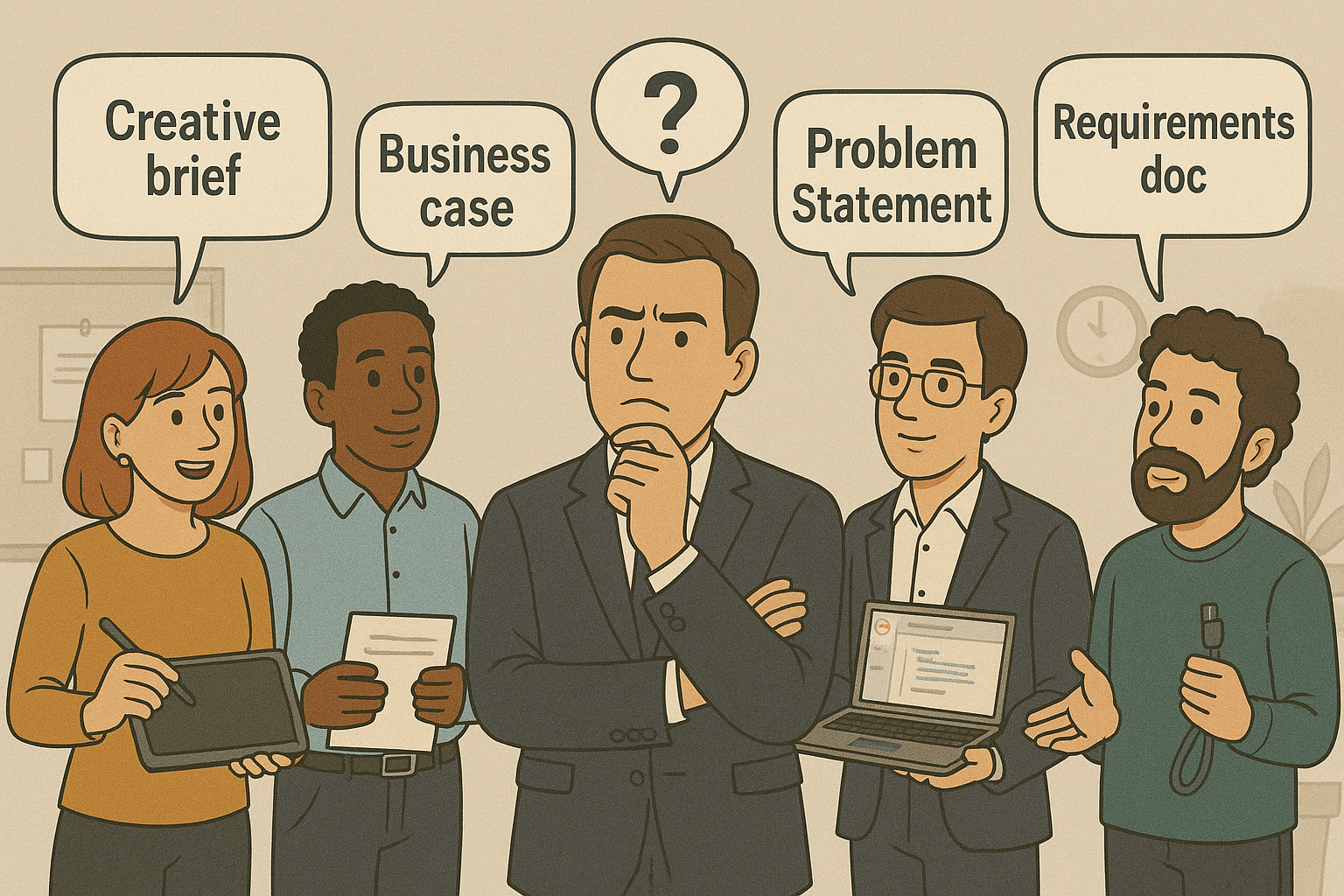
Fix the Metadata, Fix the Machine
Most companies don’t have a “content problem.”
They have a context problem.
If every team describes audiences, channels, products, and requests in their own way… it doesn’t matter how good your tech stack is. Nothing connects.
That’s why I built the 6Qs—a simple, shared metadata model (Who, What, Where, When, Why, How) that makes every part of content operations faster, cleaner, and more scalable.
In my latest article, I walk through exactly how I’d implement it inside a complex org—starting with one process, proving value in weeks, and expanding from there.
If you’ve ever tried to streamline content ops, align teams, or automate workflows across Workfront, AEM, Salesforce, or Seismic… this one is for you.

How to Make a Big Problem Small
If you lead marketing, RevOps, data, or content teams and feel buried under reporting requests, inconsistent tagging, or endless rework, this story will feel familiar. And it points to a reusable pattern you can apply immediately.

The Hard Work of AI

So what do you actually do?
“What do you actually do?”
If you’ve ever stumbled through that question—at work or over Thanksgiving dinner—this article is for you. Meet the Customer Lifecycle Funnel, an easy way to explain your role, your impact, and how it all fits together.

The 6Qs: A Smarter Way to Plan, Create, and Deliver Engagements
Most organizations don’t struggle because they have too much data.
They struggle because that data can’t be reused, governed, or automated.
In my latest article, I introduce the 6Qs Framework—a simple, universal, and understandable way to describe every engagement: Who, What, Where, When, Why, and How.
Why this matters:
Silos can keep operating as they always have—while their data becomes reusable across the enterprise.
A small, finite vocabulary (about 1,200 terms) can combine into more than 3 trillion unique engagement descriptions.
Plain-English classifications make engagement context easy to interpret and apply.
The 6Qs is a mapping layer, not a replacement. It doesn’t change data—it describes it. And that shift unlocks clarity, speed, and scale across marketing, sales, product, and service.
📩 Read the full piece in my newsletter: The 6Qs: A Smarter Way to Plan, Create, and Deliver Engagements

Silos Aren’t the Problem—Connections Are
If your fix for data chaos is “break down silos,” you’re solving the wrong problem.
Silos create depth; the issue is how they connect—especially as the distance between data creation and data use grows.
This article covers how to:
• Capture context at creation (not months later in a lake)
• Translate local terms into shared meaning via the 6Qs
• Make mapping painless inside existing workflows
• Govern IDs so meaning travels with the data

Simple Isn’t Simple: Why Oversimplified Data Breaks Go-to-Market
When faced with complexity, the natural response is to try and "keep it simple." The challenge is, simple is a lot harder than it sounds. Find out how to embed real simplicity into your organization in my latest newsletter article.

The Paradox of Data Abundance: Why Go-to-Market Teams Struggle
More data, fewer decisions?
Every week I sit with Go-to-Market leaders facing different obstacles—but one shared blocker: data. Too little. Too much. The wrong kind. Too late. Scattered. In a digital business, why is data still so painful?
In short:
The transition from data scarcity to data abundance (and why GTM lagged)
Why purpose-built definitions break across teams
The Schema6 approach: Finance-level rigor + Ops-level granularity to address the data challenges unique to GTM.
If you’re serious about automation, personalization, and AI—start with a new approach to data, not another tool.

Fact-Up Modeling – Making the Impossible Possible

Is Your Team Speaking the Same Language?
CMOs manage a maze of specialized teams, but without a shared language, collaboration breaks down. This post explores how Schema6 helps unify strategy, creative, and execution through a simple, structured framework—driving clarity, efficiency, and better outcomes.

Can’t see the forest for the microscopes: Leveraging the big picture.
While a single source of truth for engagement data is elusive, acknowledging universal engagement principles can transform organizational efficiency and communication.

“You Say Tomato…” Avoiding the Single Source of Truth trap.
Companies face challenges when combining data from different sources due to varying definitions of terms like "lead" across departments, leading to misunderstandings and inefficiencies; a better approach than seeking a single source of truth is to focus on detailed, consistent definitions understood by all teams.

Room to Grow: How To Manage Change While Continuously Changing.
The most efficient way to provide AI with the detailed context it needs is by collecting information as it is created. While these changes impact everyone in an organization, enacting them is the biggest barrier. Three guidelines to minimize pain and maximize value include externalizing descriptions to manage change effectively, thinking slow and acting fast to gather insights and mitigate risks, and searching for small victories to build momentum and demonstrate benefits.

Hansel and Gretel had it right: How to efficiently capture engagement context.
In this post, I outline a strategy for efficiently capturing engagement data by integrating data collection into the creation process, leveraging digital tools for automation. This approach ensures accurate, comprehensive data without additional manual effort, facilitating better downstream decisions and maintaining data quality.

Getting Small To Go Big: The Power of Emergent Properties.
The article discusses a data framework that breaks down customer engagements into six facets (Who, What, Where, When, Why, and How), each divided into categories and sub-categories, totaling fewer than 500 elements to describe any engagement comprehensively. This detailed approach leverages emergent properties to simplify the data ecosystem and enhance the effectiveness of automation tools like AI in managing customer relationships.

Stronger Together: Building a Shared Engagement Architecture
Building a shared engagement architecture involves capturing clean, consistent metadata to power AI and automation tools. This article delves into three key solutions: implementing a simple, shared data framework, using tools and services to capture and share context, and developing rollout plans that provide immediate and long-term value, particularly for customer-focused business disciplines like Sales, Marketing, Product Development, and Service.

How to Talk Machine: Overcoming Limitations in Providing AI Context
Humans naturally communicate context in complex, nuanced ways that AI cannot easily interpret. To ensure AI systems receive the specific and unambiguous context they need, companies must adopt a simple, consistent data framework and tools designed to capture and share detailed context efficiently.

Is Your Company Ready for AI?
The release of ChatGPT in November 2022 initiated the AI age, leading companies to invest heavily in AI solutions. However, most companies struggle with "dirty data," which lacks proper context, making it difficult to harness AI effectively; capturing this context is essential for AI to transform businesses successfully.
